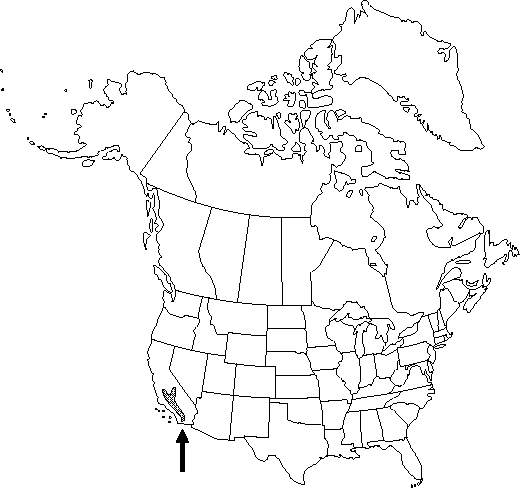Difference between revisions of "Delphinium patens subsp. montanum"
Bull. Torrey Bot. Club 69: 147. 1942.
FNA>Volume Importer |
FNA>Volume Importer |
||
| Line 23: | Line 23: | ||
}}<!-- | }}<!-- | ||
| − | --><span class="statement" id="st- | + | --><span class="statement" id="st-undefined" data-properties=""><b>Leaves:</b> basal leaves usually absent at anthesis; basal and proximal cauline leaves usually cleft more than 4/5 radius of blade. <b>Leaf</b> blade: ultimate lobes 5-10, width less than 10 mm. <b>Inflorescences</b>: pedicel generally glandular-puberulent. <b>Flowers</b>: lateral sepals 7-11 mm, spurs 8-14 mm; lower petal blades 3-6 mm; hairs symmetrically distributed.</span><!-- |
-->{{Treatment/Body | -->{{Treatment/Body | ||
| Line 56: | Line 56: | ||
|publication year=1942 | |publication year=1942 | ||
|special status=Endemic | |special status=Endemic | ||
| − | |source xml=https://jpend@bitbucket.org/aafc-mbb/fna- | + | |source xml=https://jpend@bitbucket.org/aafc-mbb/fna-data-curation.git/src/9216fc802291cd3df363fd52122300479582ede7/coarse_grained_fna_xml/V3/V3_298.xml |
|genus=Delphinium | |genus=Delphinium | ||
|section=Delphinium sect. Diedropetala | |section=Delphinium sect. Diedropetala | ||
| Line 62: | Line 62: | ||
|species=Delphinium patens | |species=Delphinium patens | ||
|subspecies=Delphinium patens subsp. montanum | |subspecies=Delphinium patens subsp. montanum | ||
| − | |||
| − | |||
| − | |||
| − | |||
| − | |||
| − | |||
| − | |||
| − | |||
| − | |||
| − | |||
}}<!-- | }}<!-- | ||
-->[[Category:Treatment]][[Category:Delphinium patens]] | -->[[Category:Treatment]][[Category:Delphinium patens]] | ||
Revision as of 13:37, 27 July 2019
Leaves: basal leaves usually absent at anthesis; basal and proximal cauline leaves usually cleft more than 4/5 radius of blade. Leaf blade: ultimate lobes 5-10, width less than 10 mm. Inflorescences: pedicel generally glandular-puberulent. Flowers: lateral sepals 7-11 mm, spurs 8-14 mm; lower petal blades 3-6 mm; hairs symmetrically distributed.
Phenology: Flowering late spring–early summer.
Habitat: Open coniferous forest
Elevation: 1500-2800 m
Discussion
Delphinium patens subsp. montanum is usually found on drier, leeward sides of mountain ranges; subsp. hepaticoideum is found on wetter, windward sides of many of the same mountain ranges.
Delphinium patens subsp. montanum is likely to be confused with D. gracilentum or D. nuttallianum; see discussion under those species for distinguishing features.
Hybrids with D. umbraculorum are known.
Selected References
None.
